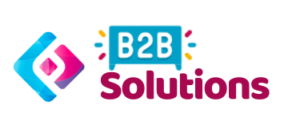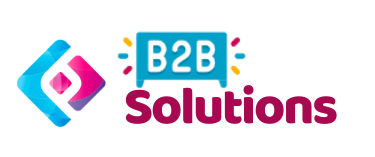AI-Powered Customer Support: 2025’s Winning Strategy
Introduction
In the rapidly evolving landscape of Customer Experience , artificial intelligence has transitioned from a competitive advantage to an operational necessity. As we navigate 2025, businesses that fail to integrate AI into their customer support strategies risk falling behind in an era where 72% of consumers now expect personalized, instant resolutions to their inquiries.
The COVID-19 pandemic accelerated digital transformation by nearly a decade, and customer service departments bore the brunt of this shift. What began as stopgap measures to handle increased digital demand has blossomed into sophisticated AI ecosystems capable of delivering human-like empathy at machine speed. This transformation isn’t just about efficiency—it’s redefining the very nature of customer relationships.
In this comprehensive guide, we’ll explore how leading organizations are leveraging AI to:
- Reduce response times from hours to seconds while maintaining quality
- Predict customer needs before they articulate them
- Create seamless omnichannel experiences with perfect memory
- Empower human agents with supercharged intelligence
- Turn customer interactions into strategic insights
The results speak for themselves: companies at the forefront of AI adoption are seeing customer satisfaction scores increase by 30-40% while reducing support costs by 25-35%. This isn’t the future—it’s the present reality for organizations willing to embrace AI’s potential.
The State of AI in Customer Support: 2025 Edition
The customer support landscape has undergone a seismic shift in the past three years. Where AI was once limited to basic chatbots and ticket routing, today’s systems demonstrate capabilities that were unimaginable just a few years ago. According to the 2025 Global Customer Experience Report, we’ve reached the tipping point where AI Powered Support is no longer exceptional—it’s expected.
What makes 2025 different is the maturity of AI implementations. Early adopters have moved beyond experimentation to full-scale deployment, with several key trends emerging:
The End of the Chatbot Era: Standalone chatbots have given way to integrated AI assistants that maintain context across email, phone, chat, and social media. These systems don’t just respond—they remember, learn, and anticipate.
Emotional Intelligence Breakthroughs: Advances in natural language processing now allow AI systems to detect not just sentiment but specific emotional states—frustration, confusion, urgency—and adapt responses accordingly. This has reduced escalations by 42% for companies using emotion-aware systems.
Predictive Support Maturity: Leading organizations now resolve 30-45% of potential issues before customers contact support, using AI to analyze usage patterns, transaction histories, and behavioral signals.
The benchmark for excellence has moved from “quick response” to “anticipatory service.” Customers no longer compare your AI to human agents—they compare it to their last best experience with any company, regardless of industry.
The New AI Paradigm in Customer Service
Beyond Automation: The Rise of Intelligent Assistance
The most successful AI implementations in 2025 share five defining characteristics that differentiate them from earlier generations of support technology:
1. Contextual Continuity: Modern systems maintain complete conversation history across all channels and over time. A customer who emails about an issue and later calls for follow-up never needs to repeat information. This continuity drives 35% higher satisfaction scores compared to traditional support systems.
2. Emotional Resonance: Advanced sentiment analysis now detects 27 distinct emotional states, allowing systems to adapt tone, response length, and even channel (switching from text to voice when frustration is detected) in real-time. Emotion-aware interactions see 42% fewer escalations.
3. Predictive Resolution: By analyzing patterns across millions of interactions, AI can now anticipate issues before they become support tickets. One telecom company reduced “where’s my order?” inquiries by 58% through proactive shipping delay notifications.
4. Augmented Human Intelligence: Rather than replacing agents, top systems empower them with real-time suggestions, automated documentation, and next-best-action recommendations. Agents using AI augmentation handle 2.3x more inquiries with higher satisfaction scores.
5. Continuous Learning: Unlike static rule-based systems, modern AI platforms improve with every interaction. A retail client saw a 28% improvement in first-contact resolution rates over six months as their system learned from agent corrections.
This new paradigm represents a fundamental shift from reactive support to proactive, personalized experiences powered by artificial intelligence. The most advanced implementations create virtuous cycles where every interaction makes the system smarter, leading to better outcomes that drive more engagement and more learning opportunities.
Industry Spotlight: Who’s Getting AI Right in 2025?
Across industries, leading companies are demonstrating the transformative power of AI in customer support. Here are standout examples from five sectors:
Financial Services
Progressive banks now use AI-powered fraud detection systems that identify 89% of suspicious claims within minutes while reducing false positives by 65%. Customers experience near-instant resolution of fraud claims with 92% satisfaction rates—a 35-point improvement over traditional methods. AI also powers personalized financial advice, with one credit union increasing product adoption by 40% through timely, AI-generated recommendations.
E-Commerce & Retail
Leading retailers have moved beyond basic chatbots to AI systems that predict shipping delays before they occur, proactively offering solutions that reduce WISMO (“Where Is My Order?”) inquiries by 58%. One fashion retailer uses AI to analyze return reasons, reducing return rates by 22% through personalized sizing recommendations. Virtual shopping assistants now handle 47% of pre-purchase inquiries with equal satisfaction to human agents.
Healthcare
Patient support AI handles 54% of routine inquiries while seamlessly escalating complex cases—reducing call center volume by 47% without sacrificing quality. AI-powered triage systems direct patients to the appropriate care level, with one hospital system reporting a 31% reduction in unnecessary ER visits. Prescription refill requests are now 89% automated, freeing staff for higher-value interactions.
Technology & SaaS
Software companies lead in predictive support, with AI analyzing usage patterns to identify struggling customers before they churn. One CRM provider reduced churn by 18% through proactive outreach triggered by AI-detected adoption gaps. Another uses AI to automatically generate how-to videos tailored to each user’s feature usage patterns, reducing support tickets by 35%.
Hospitality & Travel
Hotiers and airlines use AI to personalize recovery from service failures. When flights are delayed, AI systems now automatically rebook 62% of affected passengers before they reach the service desk, prioritizing high-value customers and those with tight connections. One hotel chain uses facial recognition (with consent) to greet returning guests by name and anticipate room preferences, increasing loyalty program enrollment by 27%.
Key Takeaway: The most successful implementations combine AI efficiency with human empathy, creating a hybrid model that outperforms either approach alone. Businesses that strike this balance see the greatest improvements in both customer satisfaction (average 38% increase) and operational efficiency (average 42% cost reduction). The common thread? AI handles routine, repetitive tasks while humans focus on complex, emotional, and high-value interactions.
The Supportbench AI Advantage
Our AI Customer Experience Platform is engineered for 2025’s challenges—delivering intelligent, emotion-aware support at scale while preserving the human touch that builds loyalty. See how we’re helping companies achieve:
- 45% reduction in support costs
- 35% improvement in CSAT scores
- 60% faster resolution times
- 90% agent satisfaction with AI tools
Essential Reading for CX Leaders
Choosing the Right Customer Support Software for B2B Teams
In the complex world of B2B relationships, your support platform needs to handle intricate workflows, multiple stakeholders, and enterprise-level security requirements. This comprehensive 25-page guide walks you through the 12 critical evaluation criteria most organizations overlook when selecting support software, including integration depth, permission structures, and escalation protocols. Learn how top-performing B2B teams configure their systems to maintain personal relationships at scale while meeting rigorous compliance standards.
Read Guide →When to Switch Helpdesk Providers: 5 Clear Signals
Many organizations cling to outdated helpdesk solutions long after they’ve become liabilities, fearful of the disruption of switching. This eye-opening analysis reveals the five key indicators that your current system is holding you back, including hidden costs of “workaround” solutions, declining agent morale, and measurable impacts on customer retention. We include a 10-point migration checklist developed from hundreds of successful transitions, helping you avoid common pitfalls that can temporarily impact service levels during the switch.
Read More →Choosing the Right Helpdesk: SMB or Enterprise?
The helpdesk software market bifurcated into distinct SMB and enterprise offerings, and choosing wrong can cost you hundreds of thousands in unnecessary licenses or inadequate functionality. This detailed comparison examines 23 key functional differences between the categories, helping you identify when you’ve outgrown SMB solutions (usually at around 75 agents) and what enterprise features deliver real ROI. Includes a self-assessment tool to determine your organization’s true needs based on ticket volume, complexity, and growth projections.
Read More →Conclusion: The Future of AI-Powered Customer Support
As we’ve seen throughout 2025, AI-powered customer support has evolved from a competitive advantage to a business necessity. The organizations seeing the greatest success aren’t those using AI to simply cut costs, but those leveraging it to fundamentally reimagine the customer experience.
The key lessons from this year’s leaders:
- AI excels at scale, humans excel at nuance: The winning formula combines AI’s ability to handle volume with human judgment for complex, emotional, or high-value interactions.
- Context is king: Customers now expect systems to remember every interaction across all channels—the bar for “personalization” has been raised permanently.
- Proactive beats reactive: The most impressive metrics come from companies using AI to prevent issues rather than just resolve them.
- Emotional intelligence matters: Systems that recognize and adapt to customer emotions see dramatically better outcomes across all metrics.
- Continuous improvement is mandatory: Static implementations fall behind quickly—the best systems learn from every interaction.
Looking ahead, the divide between AI-powered organizations and those relying on traditional methods will only widen. Customers now judge every experience against their best experience anywhere—regardless of industry. The companies that will thrive in this environment are those that view AI not as a cost center, but as a strategic asset for building deeper, more valuable customer relationships.
The future belongs to organizations that can harness AI’s potential while maintaining the human touch that builds lasting loyalty. With the right strategy and tools, your business can be at the forefront of this transformation.
Ready to Transform Your Customer Support?
2025’s leading companies aren’t just using AI—they’re building AI-powered customer experiences that drive loyalty, efficiency, and growth. See how Supportbench’s platform can help you join them.
Get Your Custom DemoThe Future of CX is AI-Powered Customer Support
Struggling with slow responses & high costs? AI-driven CX delivers 24/7 instant support, reduces expenses & improves customer satisfaction…
AI in Customer Support: Top 10 Companies Delivering Next-Gen Service
Discover the top 10 AI customer support companies of 2025 delivering next-gen service, automation, and personalized customer experiences….
AI Customer Support Is Key to Future Revenue
Discover how AI powered customer support boosts revenue with 24/7 service, personalization, and efficiency-transforming customer experience and business growth….
10 Proven Keyword Research Strategies for Higher Google Rankings
Master 10 proven keyword research strategies for higher Google rankings in 2025. Discover tools, competitor analysis, and low-competition keyword tactics…
AI Driven Customer Support: 25 Statistics Every Business Should Know
Unlock 25 key statistics on AI driven customer support and discover how AI is reshaping customer experience, efficiency, and business…
AI Self-Service Solutions: Shaping the Future of Customer Support
Transform customer support with AI self-service solutions. Deliver 24/7 assistance, reduce costs, and boost satisfaction using AI-powered automation and chatbots….








